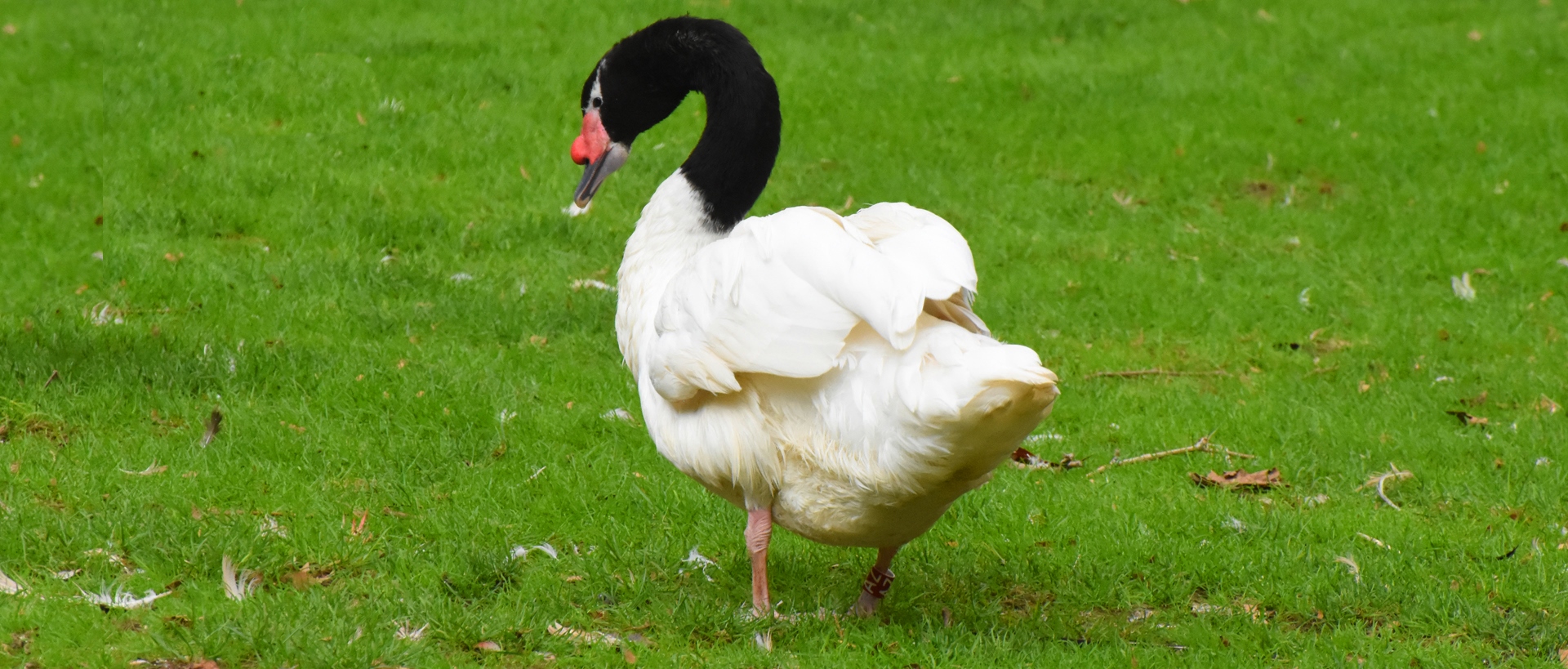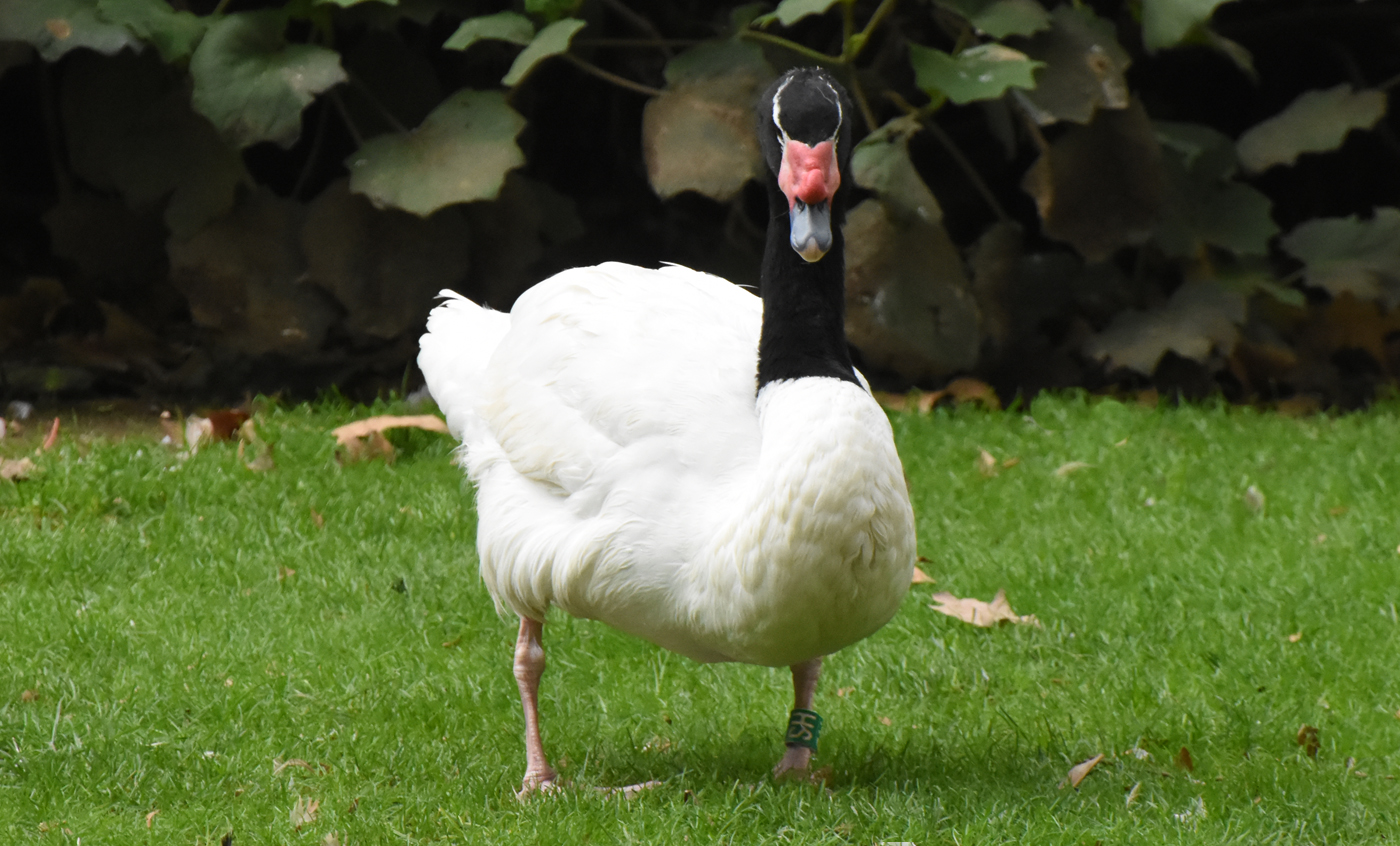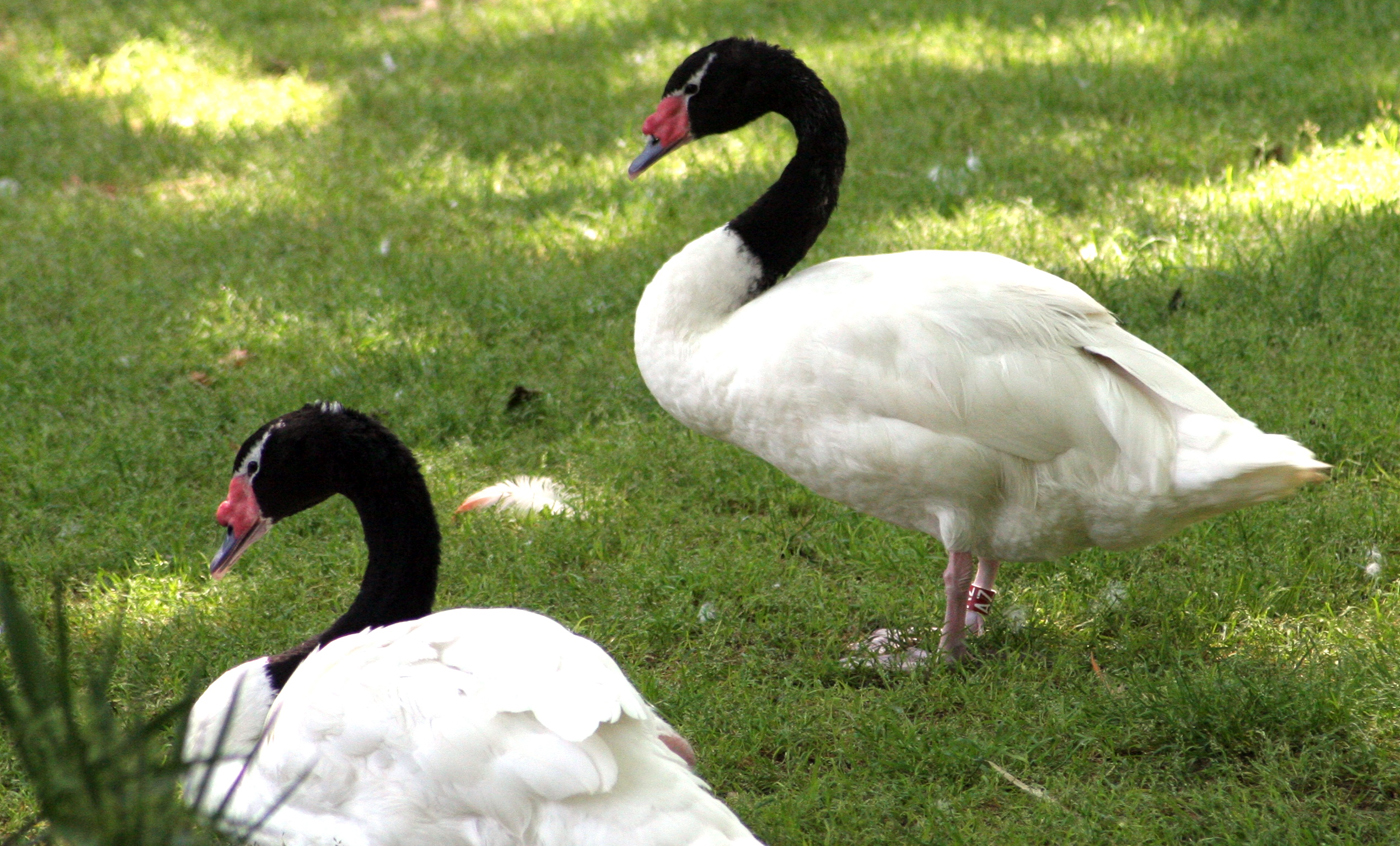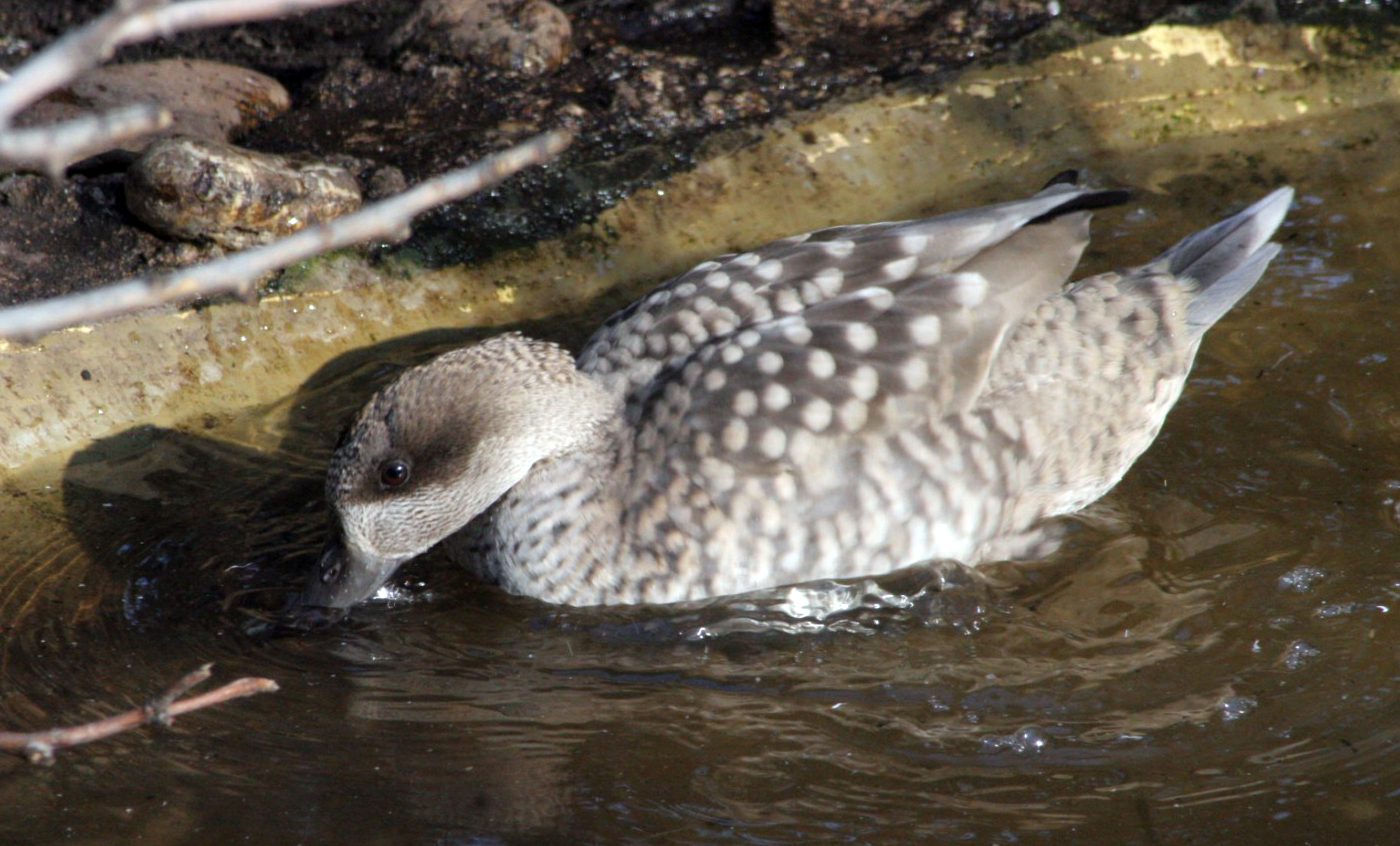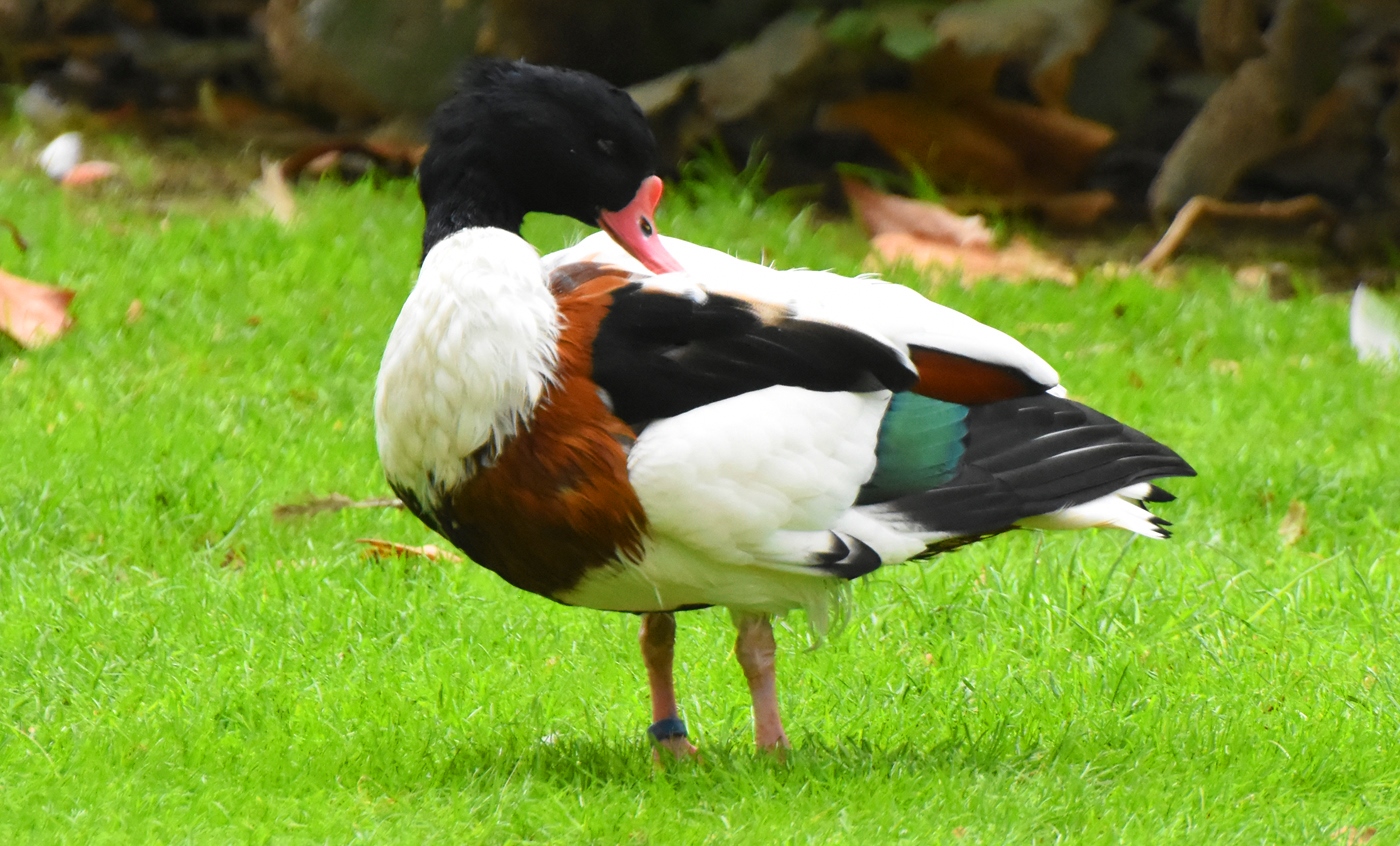Black-necked swan
The black-necked swan is the smallest of the Cygnus genus. It lives in the continental and, less frequently, salt waters along the coast of the southern half of South America. It feeds on aquatic vegetation, small invertebrates and fish and amphibian spawn.
It forms stable pairs and is the most aggressive species of swan when defending the nest and its territory.
Natural habit
Southern Brazil, Paraguay, Uruguay, Chile, Argentina and Falkland island (Malvinas)
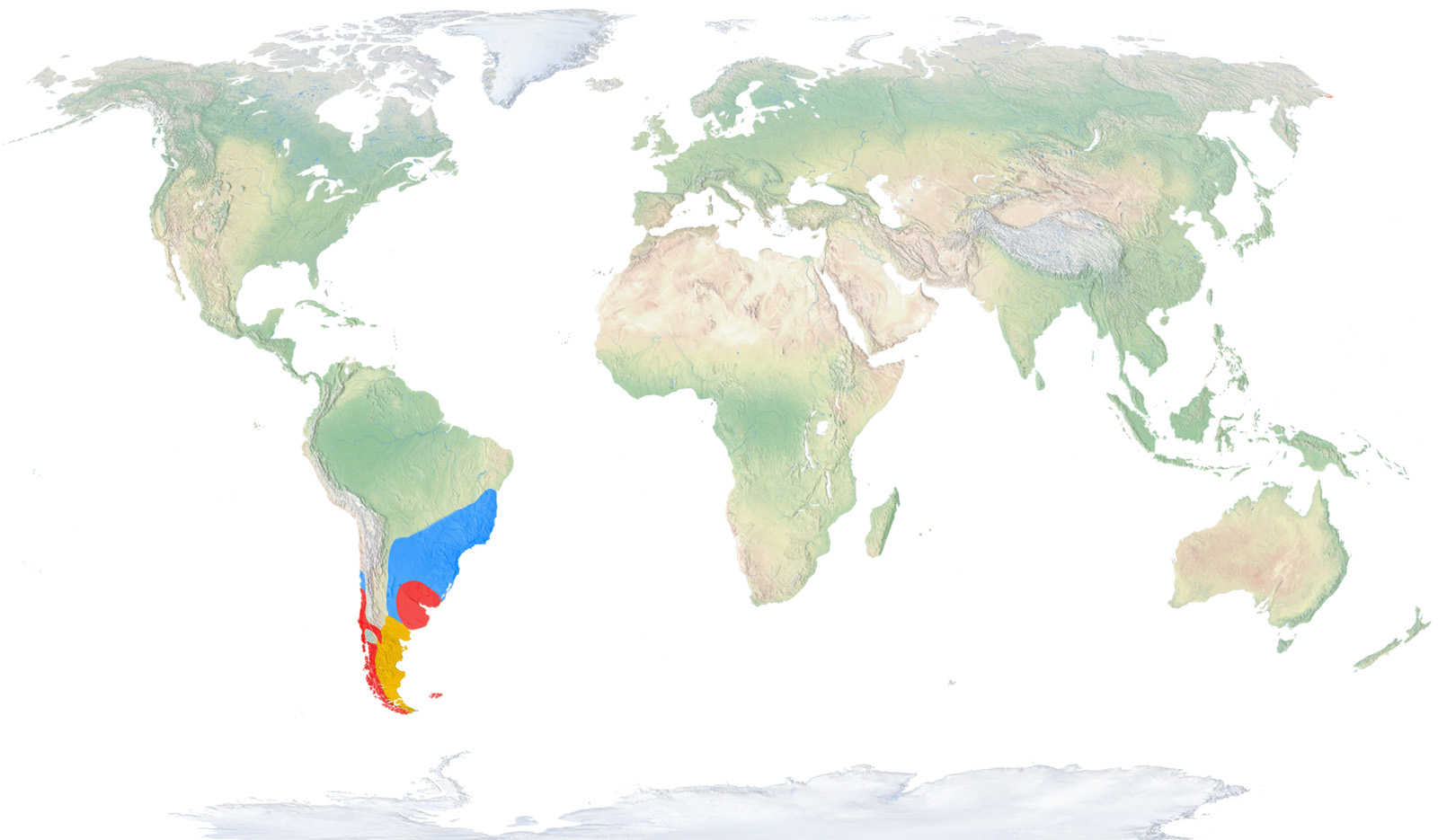
- Distribution / Resident
- Breeding
- Wintering
- Subspecies
Risk level
- Extint
- Extint in the wild
- Critically endangered
- In Danger
- Vulnerable
- Near threatened
- Minor concern
- Insufficient data
- Not evaluated
Taxonomy
Physical characteristics
Biology
Reproduction
Biology
The black-necked swan is the smallest member of the Cygnus genus. Its characteristic feature is its completely white body, except for its head and neck, which are black. Its bill is blueish, with a red knob near the base, forming a curved wattle on the upper part. Females are smaller than males and can weight as half as males.
It inhabits continental waters and, less often, salty coastal waters of the southern half of South America
It feeds on aquatic vegetation, small invertebrates and eggs of fish and amphibians. It mainly feeds by submerging its head, although during dry periods it can graze in the fields nearby temporary ponds.
Breeding starts in July and August, although occasionally it can begin a little earlier, and lasts until September or November. It forms stable couples and it is the most aggressive swan species when defending the nest and the territory. It builds a nest by piling up great amounts of plants on the riverside, or even floating in the middle of the water, where it lays four to eight creamy coloured eggs, which are brooded only by females, for 34 to 36 days.
It is relatively sedentary in most of its distribution area, although many migrate in search of food or warmer temperatures, during the colder months of the year. Fluctuation of the importance of aquatic areas also causes many annual movements.
It is not endangered in most of its distribution area and is considered common and abundant in many parts. Some parts of Chile, where it was hunted to extinction, have been recolonized by this species. However, in many parts of this country eggs are still recollected and animals are hunted, despite being a protected species since the beginning of the 80s.




